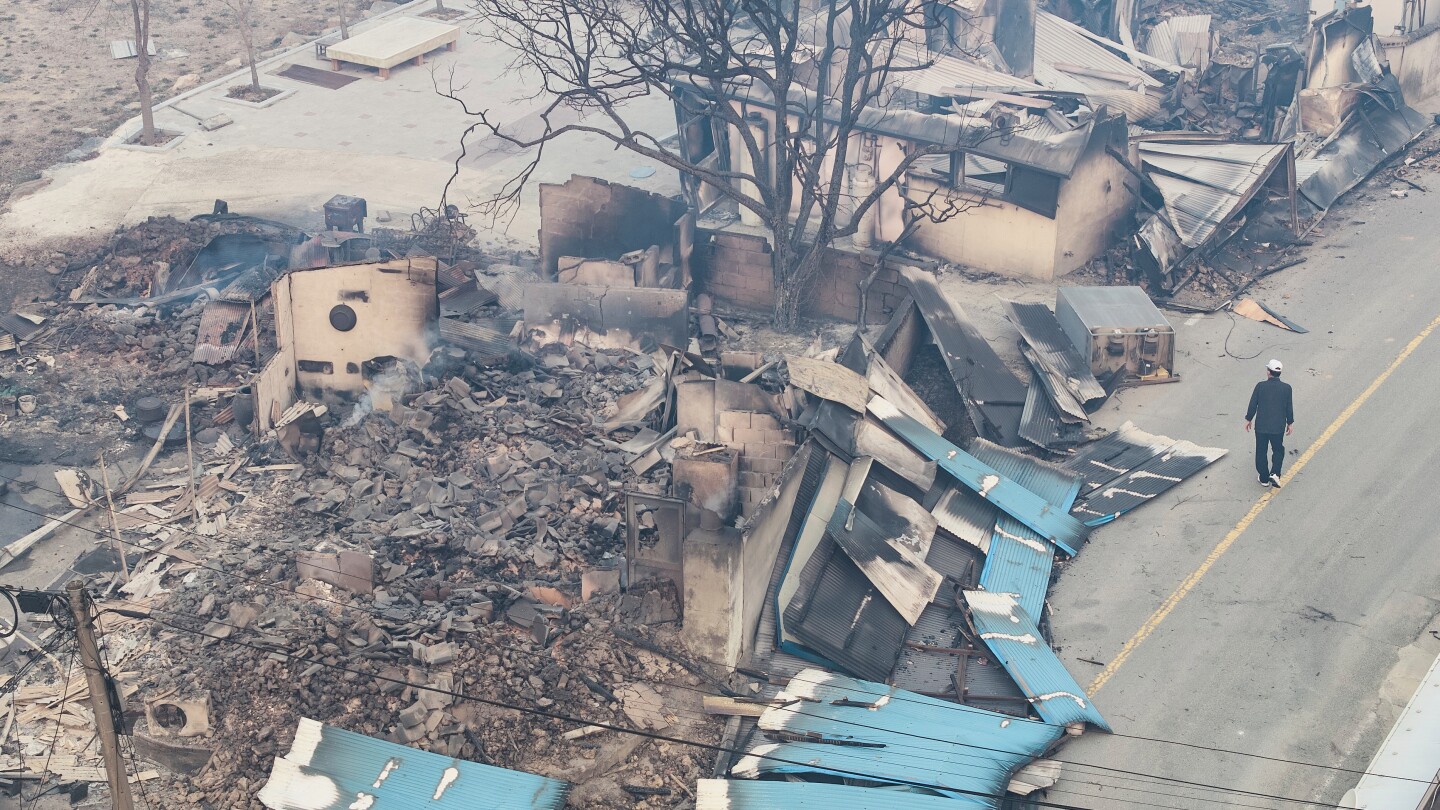Devastating Wildfires in South Korea: Understanding the Tragedy
Recent wind-driven wildfires in South Korea have tragically claimed the lives of at least 18 individuals, highlighting the urgent need for improved disaster preparedness and climate resilience. As communities struggle to recover from this catastrophe, experts are raising alarms about the increasing risks of wildfires in the region. In this article, we’ll delve deeper into the causes, consequences, and future implications of these devastating wildfires in South Korea.
The Immediate Impact of the Wildfires
The wildfires broke out in various regions, particularly in the eastern coastal areas, where dry conditions and strong winds exacerbated the situation. Firefighters faced tremendous challenges, not only due to the ferocity of the flames but also because of the rugged terrain and rapidly changing weather conditions. They worked tirelessly, often putting their lives on the line, to save homes and lives.
As the flames spread, local residents were forced to evacuate their homes, leaving behind cherished possessions and, in some heartbreaking cases, family pets. The emotional toll of such loss is immense, and the community is left grappling with the aftermath of this disaster.
Human Cost and Community Resilience
The loss of life in the wildfires is a stark reminder of the human cost of natural disasters. Among those who perished were elderly individuals unable to escape the rapidly advancing flames. This tragedy has sparked a conversation about vulnerability, especially among the aging population in South Korea.
In the wake of this tragedy, communities are coming together to support one another. Local organizations are mobilizing to provide assistance to those affected, offering shelter, food, and counseling services. This spirit of resilience is crucial as individuals begin to rebuild their lives.
Understanding the Causes of the Wildfires
To truly address the issue of wildfires in South Korea, it is essential to understand their underlying causes. While wildfires are not a new phenomenon, the increasing frequency and intensity of these events can be attributed to several factors:
- Climate Change: Rising global temperatures have led to drier conditions and prolonged heatwaves, creating an environment ripe for wildfires.
- Deforestation: Urban development and agricultural expansion have resulted in significant loss of forested areas, reducing natural barriers to wildfires.
- Wind Patterns: The recent wildfires were exacerbated by strong winds, which can rapidly spread flames across vast areas.
Climate Resilience: A Necessary Focus
Experts are calling for a renewed focus on climate resilience strategies to mitigate the risks associated with wildfires. This includes:
- Improved Land Management: Implementing sustainable land use practices can help maintain healthy ecosystems that are less susceptible to wildfires.
- Community Preparedness Programs: Educating residents about evacuation plans and fire safety can save lives during emergencies.
- Investment in Technology: Utilizing advanced technology for early detection of wildfires can significantly reduce response times and save resources.
Government Response and Future Implications
In the wake of the wildfires, the South Korean government has faced scrutiny regarding its emergency response protocols. Critics argue that more robust systems and resources are needed to handle such disasters effectively. There is an urgent need for policy reform that focuses on prevention and preparedness.
As South Korea navigates the recovery process, there are significant implications for future wildfire management strategies:
- Policy Reform: A comprehensive review of disaster management policies is crucial to enhance the nation’s ability to respond to wildfires.
- Public Awareness Campaigns: Increasing awareness about fire risks and safety measures among the public can help save lives.
- International Collaboration: Learning from global best practices in wildfire management can aid South Korea in developing more effective strategies.
Long-term Solutions and Sustainable Practices
To decrease the likelihood of future wildfires, South Korea must focus on long-term solutions. Emphasizing sustainable practices is key:
- Reforestation Efforts: Planting trees and restoring natural habitats can help create firebreaks and improve overall ecosystem health.
- Community Engagement: Involving local communities in fire prevention strategies fosters a sense of shared responsibility and awareness.
- Research and Innovation: Investing in research to understand fire behavior and develop innovative firefighting technologies can enhance preparedness.
Conclusion: A Path Forward
The devastating wildfires in South Korea serve as a poignant reminder of the realities of climate change and the urgent need for effective disaster management strategies. While the toll of this tragedy is staggering, it also presents an opportunity for growth and improvement in how communities and governments respond to such crises.
As the nation mourns the loss of life and property, it is crucial to focus on building resilience against future wildfires. By adopting comprehensive strategies that prioritize sustainability, community engagement, and technological advancement, South Korea can pave the way for a safer future.
In the face of adversity, it is the spirit of the people that will ultimately shine through, as they come together to rebuild and strengthen their communities for generations to come.
See more Your Daily Weather



